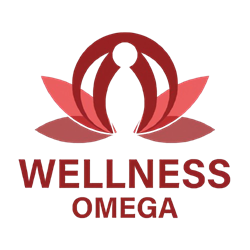The Ripple Effect: How Blood Flow Impacts Fitness, Recovery, and Longevity
Blood flow is more than just a physiological function; it is the lifeblood of fitness, recovery, and longevity. This article explores the fascinating ripple effect of blood circulation, highlighting how it enhances physical performance, accelerates healing, and contributes to a longer life. Knowing the critical role that blood flow plays can empower you to make informed decisions about your fitness and health routines.
The Role of Blood Flow in Fitness
Blood flow is essential for delivering oxygen and nutrients to muscles during exercise. Improved circulation contributes to better overall performance. Here’s how:
1. Enhanced Oxygen Delivery
When you engage in physical activities, your muscles require additional oxygen to sustain effort. Increased blood flow ensures that oxygen-rich blood reaches working muscles swiftly, optimizing endurance and strength. This is particularly important for endurance athletes who rely on cardiovascular efficiency.
2. Nutrient Supply
Exercise depletes glycogen stores, and efficient blood circulation is crucial for transporting glucose and other vital nutrients to replenish energy. For optimal performance, it is vital to not only train the muscles but also support the circulatory system that fuels them.
3. Temperature Regulation
During vigorous exercise, maintaining body temperature is crucial. Blood vessels dilate to release heat, enhancing comfort and performance. Proper blood flow ensures effective temperature regulation, allowing athletes to perform at peak levels.
4. Reduced Fatigue
Good circulation helps clear metabolic waste products such as lactic acid from the muscles, effectively reducing fatigue. This prolongs exercise sessions and enhances overall performance, making your workouts more effective and enjoyable.
Blood Flow and Recovery
Recovery is just as important as physical exertion. Improved blood flow can significantly aid recovery processes. Here are the key benefits:
1. Accelerated Muscle Repair
After intense workouts, muscles endure stress and micro-tears, leading to delayed onset muscle soreness (DOMS). Enhanced blood circulation helps deliver the necessary nutrients to muscles, facilitating faster repair and recovery.
2. Reduced Swelling and Inflammation
Improved circulation is crucial for flushing out inflammatory substances from the body. This reduces swelling and accelerates recovery, allowing athletes to bounce back quicker from injuries or intense training sessions.
3. Pain Management
Increased blood flow can help alleviate muscle pain and stiffness. Techniques such as massage therapy, which boosts circulation, have been shown to enhance recovery by reducing muscle soreness and increasing flexibility.
4. Improved Mental Recovery
It’s not just muscles that need recovery; the brain requires it too. Enhanced blood flow supports cognitive functions, allowing for better focus, decision-making, and mental resilience in future workouts.
The Longevity Connection
Blood flow is not just a short-term factor; it plays a critical role in long-term health and longevity. Here’s how:
1. Cardiovascular Health
A well-functioning circulatory system is vital for reducing the risk of heart disease, stroke, and other cardiovascular conditions. Regular exercise, which boosts blood flow, strengthens the heart and enhances overall cardiovascular health.
2. Improved Immune Function
Blood circulation transports white blood cells and antibodies throughout the body, playing a pivotal role in immune response. Better circulation means your body can more effectively fend off infections and diseases.
3. Hormonal Balance
Proper blood flow is essential in hormone distribution, impacting everything from stress levels (cortisol) to growth and repair hormones (like testosterone). Balanced hormones contribute significantly to longevity and quality of life.
4. Enhanced Nutrient Absorption
By ensuring nutrients are effectively delivered to tissues, good blood circulation enhances absorption rates of essential vitamins and minerals, which play crucial roles in health maintenance and longevity.
Improving Blood Flow: Practical Tips
Improving blood flow is vital for all aspects discussed. Here are some effective strategies:
- Regular Exercise: Engage in aerobic and resistance training regularly to improve overall circulation.
- Stay Hydrated: Proper hydration is essential for optimal blood volume and circulation.
- Stretching and Mobility Work: These activities support flexibility and help maintain open blood vessels.
- Healthy Diet: Consuming a balanced diet rich in fruits, vegetables, healthy fats, and lean proteins promotes cardiovascular health.
- Massage and Foam Rolling: These practices enhance blood flow and help recover from workouts.
- Avoid Smoking: Smoking constricts blood vessels, severely impacting circulation.
- Good Sleep Hygiene: Quality sleep aids in regeneration processes and supports overall circulatory health.
Conclusion
Blood flow is a powerful yet often overlooked factor in fitness, recovery, and longevity. Its ripple effects can be transformative, improving physical performance, speeding recovery times, and promoting long-term health. By prioritizing and optimizing blood circulation through regular exercise, hydration, balanced nutrition, and lifestyle changes, you can significantly impact your overall well-being. Remember, investing in your circulatory health is an investment in a fitter, healthier, and longer life.
Frequently Asked Questions (FAQs)
1. How can I tell if my blood circulation is good?
Signs of good circulation include normal body temperature, healthy skin tone, and consistent energy levels. If you often feel cold or experience numbness, it may indicate poor circulation.
2. Does diet impact blood flow?
Absolutely! Foods rich in nitrates (like beets), omega-3 fatty acids (found in fatty fish), and antioxidants can enhance blood flow and vascular health.
3. Can stress affect blood circulation?
Yes, chronic stress can constrict blood vessels and impair circulation. Practicing stress management techniques like mindfulness and exercise is beneficial.
4. How long should I exercise to improve blood flow?
Engaging in at least 150 minutes of moderate-intensity aerobic exercise per week, combined with strength training twice a week, can significantly enhance blood circulation.
5. Is it possible to improve blood flow quickly?
Activities like warm-up exercises, stretching, or even a brief walk can quickly enhance blood circulation immediately. Regular consistency is key for long-term benefits.

